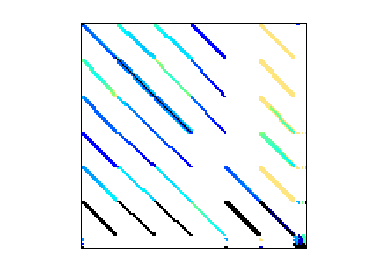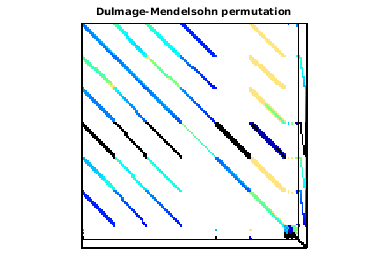Grueninger/windtunnel_evap3d
3D wind tunnel evaporation, Christoph Grueninger, Univ. Stuttgart
| Name |
windtunnel_evap3d |
| Group |
Grueninger |
| Matrix ID |
2815 |
|
Num Rows
|
40,816 |
|
Num Cols
|
40,816 |
|
Nonzeros
|
803,978 |
|
Pattern Entries
|
2,730,600 |
|
Kind
|
Computational Fluid Dynamics Problem |
|
Symmetric
|
No |
|
Date
|
2017 |
|
Author
|
C. Gr\"uninger |
|
Editor
|
T. Davis |
| Structural Rank |
40,816 |
| Structural Rank Full |
true |
|
Num Dmperm Blocks
|
1,777 |
|
Strongly Connect Components
|
1,777 |
|
Num Explicit Zeros
|
1,926,622 |
|
Pattern Symmetry
|
100% |
|
Numeric Symmetry
|
0% |
|
Cholesky Candidate
|
no |
|
Positive Definite
|
no |
|
Type
|
real |
| Download |
MATLAB
Rutherford Boeing
Matrix Market
|
| Notes |
Wind tunnel evaporation, Christoph Grueninger, Univ. Stuttgart
Source: Christoph Grueninger, pr at grueninger.de
Stuttgart Research Centre for Simulation Technology,
Univ. of Stuttgart, Germany
Matrix files: windtunnel-evaporation-(2|3)d-time4-newton1.mat
Right-hand sides: windtunnel-evaporation-(2|3)d-time4-newton1-rhs.mat
== Background ==
The matrix origins from a simulation of soil-water evaporation from a
water-filled sand box to air in a pipe. It is based on a coupled
Navier-Stokes/Darcy model. The Navier-Stokes model features one fluid
phase, the Darcy model two fluid phases. Each fluid phase may be composed
of two components, in addition, non-isothermal processes are considered.
A cell-centered finite volume method (FVM) is combined with a marker and
cell (MAC) scheme. The coupled problem is compiled in one monolithic
system and solved using Newton's method. The given matrix occurs at the
4th time-step in the 1st Newton step.
== Publication and software==
The related model and the software is described in:
Christoph Gr\"uninger, Thomas Fetzer, Bernd Flemisch, Rainer Helmig:
"Coupling DuMuX and DUNE-PDELab to investigate evaporation
at the interface between Darcy and Navier-Stokes flow"
SimTech Technical Report 2017 - 1, 2017.
doi: 10.18419/opus-9360
https://elib.uni-stuttgart.de/handle/11682/9377?mode=simple
abstract:
An implementation of a coupled Navier-Stokes/Darcy model based on
different Dune discretization modules is presented. The Darcy model is
taken from DuMuX, the Navier-Stokes model is implemented on top of
Dune-PDELab, and the coupling is done with help of Dune-MultiDomain
together with some project-specific auxiliary code. The Navier-Stokes
model features one fluid phase, the Darcy model two fluid phases. Each
fluid phase may be composed of two components, in addition,
non-isothermal processes are considered. The coupling between free and
porous-medium flow uses a sharp interface between both subdomains and
conserves mass, momentum, and energy by accounting for the corresponding
fluxes across the interface. A cell-centered finite volume method (FVM)
is combined with a marker and cell (MAC) scheme. It solves the coupled
problem in one monolithic system using a Newton method and a direct
linear solver. Numerical results demonstrate the basic functioning and a
lab-scale reference application.
The software to reproduce the matrices is available as open source:
https://git.iws.uni-stuttgart.de/dumux-pub/Grueninger2017b
|


